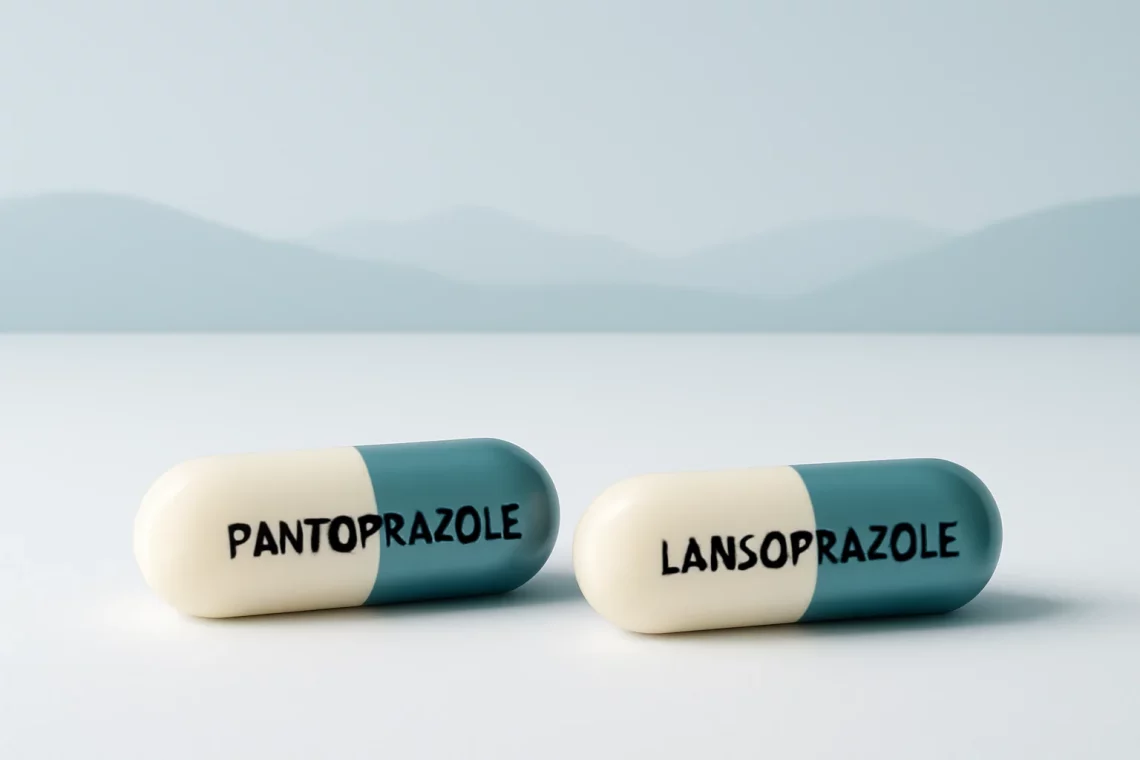
Pantoprazole vs Lansoprazole: Which Proton Pump Inhibitor is Better?
In recent years, the prevalence of gastrointestinal disorders has increased, leading to a greater need for effective treatments. Among these treatments, proton pump inhibitors (PPIs) have gained popularity for their ability to reduce stomach acid production. Two of the most commonly prescribed PPIs are pantoprazole and lansoprazole. Both medications are effective in treating conditions such as gastroesophageal reflux disease (GERD) and peptic ulcers, but they have different profiles in terms of efficacy, side effects, and usage. Understanding the differences and similarities between these two medications can help patients and healthcare providers make informed decisions regarding treatment options.
As more individuals seek relief from acid-related disorders, the choice between pantoprazole and lansoprazole becomes crucial. Factors such as the severity of the condition, individual response to medication, and potential side effects play a significant role in determining which medication may be more suitable for a patient. Additionally, the growing body of research surrounding these medications continues to provide insights into their effectiveness and safety.
In this article, we will delve into the details surrounding pantoprazole and lansoprazole, exploring their mechanisms of action, indications, side effects, and considerations for use. By examining these factors, we aim to provide a comprehensive overview that can aid in understanding the best use of these medications in the management of gastrointestinal disorders.
Mechanism of Action
Understanding how pantoprazole and lansoprazole work is essential for grasping their therapeutic effects. Both medications belong to a class of drugs known as proton pump inhibitors (PPIs). They function by inhibiting the proton pump in the stomach lining, which is responsible for the final step in the production of gastric acid.
Pantoprazole works by binding to the cysteine residues of the H+/K+ ATPase enzyme, effectively blocking the secretion of gastric acid. This action reduces the acidity of the stomach contents, providing relief from symptoms associated with excessive acid production. The result is a decrease in gastric acidity, allowing for healing of the esophagus and stomach lining.
Similarly, lansoprazole exerts its effects through the same mechanism. It inhibits the proton pump, leading to a significant reduction in gastric acid secretion. This reduction in acidity not only alleviates symptoms of heartburn and acid reflux but also promotes the healing of ulcers and esophagitis.
The onset of action for both medications typically occurs within one hour of administration, and their effects can last up to 24 hours. However, the duration and intensity of acid suppression may vary between individuals, which can influence the choice of medication based on patient-specific factors.
In terms of dosage, pantoprazole is commonly prescribed in 20 mg and 40 mg formulations, while lansoprazole is available in 15 mg and 30 mg doses. The choice of dosage often depends on the severity of the condition being treated and the patient’s response to therapy.
Overall, the mechanisms of action for pantoprazole and lansoprazole are similar, making them effective options for managing acid-related disorders. However, individual responses may vary, necessitating careful consideration of each patient’s unique situation when prescribing these medications.
Indications and Uses
Both pantoprazole and lansoprazole are indicated for a variety of gastrointestinal conditions characterized by excessive stomach acid production. These include gastroesophageal reflux disease (GERD), peptic ulcers, and Zollinger-Ellison syndrome, among others.
Pantoprazole is often used in the management of GERD, a chronic condition where stomach acid frequently flows back into the esophagus, causing irritation and discomfort. It is also effective in promoting the healing of erosive esophagitis, which is inflammation of the esophagus caused by acid exposure. Additionally, pantoprazole can be utilized as part of a treatment regimen for peptic ulcers, particularly those caused by Helicobacter pylori infection, in combination with antibiotics.
Lansoprazole shares similar indications, being commonly prescribed for GERD and erosive esophagitis. Furthermore, it is frequently used in the treatment of peptic ulcers and for the prevention of NSAID-associated ulcers in patients at risk. Lansoprazole has also been studied for its potential role in preventing stomach cancer in patients with a history of gastric issues.
While both medications are effective in treating similar conditions, the choice between them may depend on various factors, including patient tolerance, cost, and potential drug interactions. Some studies suggest that certain patients may respond better to one medication over the other, which underscores the importance of personalized treatment approaches.
In clinical practice, the prescribing physician will evaluate the patient’s medical history, current medications, and specific symptoms to determine the most appropriate therapy. The goal is to provide effective relief from symptoms while minimizing the risk of side effects and ensuring optimal healing.
Side Effects and Considerations
Like all medications, pantoprazole and lansoprazole come with potential side effects that healthcare providers and patients should be aware of. While many individuals tolerate these medications well, some may experience adverse reactions.
Common side effects associated with pantoprazole include headache, diarrhea, nausea, vomiting, and abdominal pain. These symptoms are generally mild and transient, resolving on their own without the need for discontinuation of the medication. However, in rare cases, more severe side effects such as allergic reactions, liver dysfunction, or kidney problems may occur.
Lansoprazole also has a similar side effect profile, with common reactions including headache, diarrhea, and abdominal discomfort. Additionally, some patients may experience dizziness or fatigue. As with pantoprazole, serious side effects are rare but can include severe allergic reactions or gastrointestinal infections due to reduced stomach acidity.
Long-term use of PPIs has been associated with certain risks, including nutrient malabsorption, specifically vitamin B12 and magnesium deficiencies, and an increased risk of gastrointestinal infections. Patients on prolonged therapy should be monitored for these potential complications.
When considering the use of pantoprazole or lansoprazole, it is crucial to conduct a thorough medical evaluation. Patients should inform their healthcare provider of any existing medical conditions, particularly liver or kidney issues, as well as any other medications they are taking to avoid potential drug interactions.
Ultimately, the decision to use either pantoprazole or lansoprazole should be based on an individual assessment of risks and benefits, taking into account the specific needs and circumstances of the patient.
Conclusion
In summary, pantoprazole and lansoprazole are both effective proton pump inhibitors that play a vital role in the management of acid-related gastrointestinal disorders. Understanding their mechanisms of action, indications, and potential side effects can empower patients and healthcare providers to make informed decisions regarding treatment options.
While both medications share similar therapeutic effects, individual responses may vary, necessitating personalized treatment approaches. Ongoing communication between patients and healthcare providers is essential for optimizing therapy and ensuring the best possible outcomes.
As with any medication, it is important to use pantoprazole and lansoprazole under the guidance of a qualified healthcare professional. Patients should not hesitate to discuss any concerns or questions regarding their treatment, as well as to report any side effects experienced during therapy.
**Disclaimer:** This article is not intended as medical advice. For health concerns or specific medical conditions, please consult a qualified healthcare provider.




